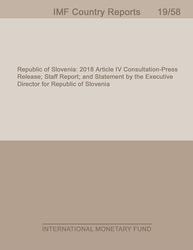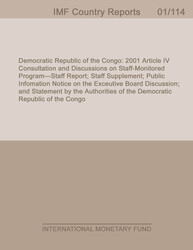
Central African Economic and Monetary Community: Common Policies in Support of Member Countries Reform Programs-Staff Report; and Statement by the Executive Director
Central African Economic and Monetary Community: Common Policies in Support of Member Countries Reform Programs-Staff Report; and Statement by the Executive Director
READ MORE...
Volume/Issue:
Volume 2025
Issue 171
Publication date: July 2025
ISBN: 9798229016476
$20.00
Add to Cart by clicking price of the language and format you'd like to purchase
Available Languages and Formats
| English |
Prices in red indicate formats that are not yet available but are forthcoming.
Topics covered in this book
This title contains information about the following subjects.
Click on a subject if you would like to see other titles with the same subjects.
Finance , Economics- Macroeconomics , Public Finance , Business and Economics - Statistics , CEMAC authorities , financing condition , CEMAC banking legislation , CEMAC economy , Policy discussion , CEMAC banking system , CEMAC program country , Fiscal stance , Financial sector stability , Anti-money laundering and combating the financing of terrorism (AML/CFT) , Liquidity , Global , Middle East
Also of interest
Summary
The CEMAC economy gained some momentum in 2024, and inflation
continued to ease while still above the regional converge criterion. The external position
weakened further, with the current account deficit rising and the reserve coverage
stagnating. Preliminary data on fiscal outturns suggest a worsening fiscal position,
reflecting large fiscal slippages. An extraordinary Conference of CEMAC Heads of State
(HoS) took place in December 2024. HoS reaffirmed their political commitment to a
consistent and coordinated regional strategy to preserve fiscal sustainability, financial
sector stability, and to strengthen CEMAC’s external position. Under the baseline, the
external position is expected to progressively weaken over the medium term. Without
decisive corrective actions—i.e., a stronger fiscal consolidation in some member
countries—the reserve coverage could fall below 4 months of prospective import by
2027, far under the assessed adequate level (5 months). Post-election economic plans
for a more sustainable policy mix, in line with HoS commitments and prospective IMF-supported arrangements, could steer the region towards a resilient outlook and stabilize
(if not increase) the current reserve coverage, while strengthening the fiscal position.
The baseline excludes these anticipated corrective actions pending their full definition,
scope, and implementation plan. Both outlooks (baseline and resilient) are subject to
high uncertainty and elevated risks, notably related to debt rollover, tightening financing
conditions and sovereign debt distress.
Copyright © 2010 - 2025
Powered by:
AIDC



